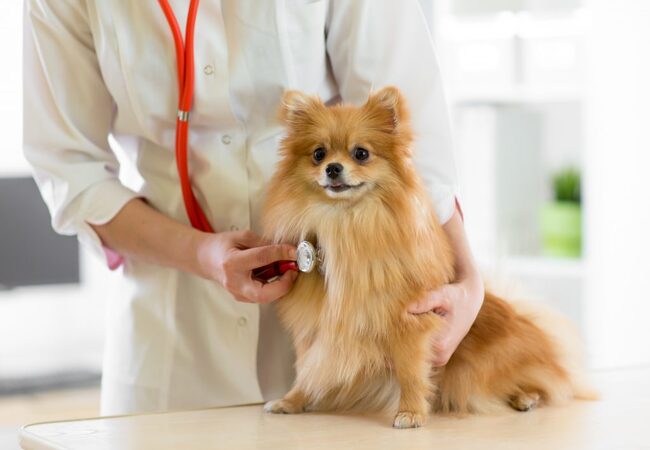2025 Vet Insight: Clostridial Enterotoxicosis in Dogs – Causes, Diagnosis & Care 🐾🩺

In this article
2025 Vet Insight: Clostridial Enterotoxicosis in Dogs – Causes, Diagnosis & Care 🐾🩺
By Dr. Duncan Houston BVSc
Hello! I’m Dr Duncan Houston BVSc, veterinarian and Ask A Vet founder. Clostridial enterotoxicosis—often due to Clostridium perfringens—is a common and treatable cause of diarrhea in dogs. This 2025 guide explains causes, symptoms, diagnosis, and proactive care to help your dog thrive. 😊
1. What Is Clostridial Enterotoxicosis?
This condition occurs when Clostridium perfringens—a spore-forming, anaerobic bacterium normally present in the environment and intestines—overgrows and releases toxins that irritate the gut lining, causing diarrhea and abdominal pain.
2. Why Dogs Develop It
- Ingesting raw, undercooked, expired meat or carrion.
- Stressful situations—boarding, kenneling, medical illness, travel.
- Dietary changes or foods that raise gut pH, promoting toxin production.
- Concurrent diseases such as parvovirus, IBD, or parasitism.
3. Who’s Most at Risk?
All dogs can be affected, but risk is elevated in:
- Those with sudden diet changes.
- Puppies or immunocompromised dogs.
- Dogs recovering from antibiotics or GI illness.
- Dogs in kennels, shelters, or boarding situations.
4. Recognizing the Signs 🩺
Clostridial enterotoxicosis typically manifests as:
- Acute, small-bowel diarrhea—often watery, with mucus or fresh blood.
- Flatulence, straining, frequent defecation.
- Abdominal discomfort: hunching, reluctance to touch tummy.
- Vomiting or mild fever—occasional.
- Chronic, recurrent diarrhea in some dogs.
- Hemorrhagic gastroenteritis in severe cases—bloody, volume diarrhea; medical emergency.
5. Diagnostic Process 🔍
- Clinical history: Recent diet changes, stress, exposure to raw food or other dogs.
- Physical exam and basic labs: CBC, chemistry, urinalysis—to rule out other causes.
- Fecal testing:\n
- Direct smear or Gram stain to visualize clostridia.
- \n
- Toxin assays (ELISA/PCR) to detect enterotoxin—helpful but not definitive.
- Endoscopy for chronic cases, when ruling out IBD or parasites.
6. Treatment Options 🩹
6.1 Fluid & Electrolyte Support
For dehydrated or hemorrhagic dogs—IV or subcutaneous fluids are essential.
6.2 Antibiotics
- Metronidazole or amoxicillin, commonly 7–10 days for acute cases.
- Chronic/recurrent cases may need longer, tapering antibiotic courses.
6.3 Diet & Gut Support
- High-fiber diets to stabilize gut flora and stool consistency.
- Probiotics/prebiotics to encourage healthy bacterial colonization.
- Bland diets (boiled chicken/rice) reduce gut demand during recovery.
6.4 Supportive Care
- Avoid raw food and stress during recovery.
- Recheck fecal samples after 10–14 days; adjust therapy as needed.
- For recurring cases, reevaluate for IBD, parasites, or dietary intolerances.
7. Prognosis & Follow-Up 📈
Most dogs recover fully with treatment and dietary management. Chronic/recurrent cases may need ongoing diet/probiotic support.
Hemorrhagic cases require urgent veterinary attention and have a good prognosis if treated promptly.
8. Prevention Strategies ✅
- Avoid raw/expired food.
- Transition diets slowly over 7–10 days.
- Minimize stress triggers: provide consistent care during boarding or illness.
- Maintain gut health: use vet-recommended probiotics and fiber-rich diets.
- Follow hygiene practices: clean environment, prompt stool disposal.
9. Ask A Vet App Support & Products
Leverage the Ask A Vet app for:
- 24/7 vet chat to assess dehydration and next steps
- Recovery trackers for diet, meds, and hydration
- Product guidance: fiber supplements from Woopf, probiotic blends via Purrz
- Reminders for doses, fecal re-checks, and follow-up vet care
10. FAQs on Clostridium in Dogs ❓
- Q: Can my dog spread it to me?
- No confirmed zoonotic risk—but good hygiene after handling stool is always advised.
- Q: Why do cultures detect clostridia in healthy dogs?
- Because C. perfringens naturally lives in many dogs, diagnosis relies on toxin presence, not simple culture.
- Q: How long does treatment take?
- Acute cases: 7–10 days of antibiotics + diet. Chronic cases may need months of management. Most recover well.
- Q: Is it the same as hemorrhagic gastroenteritis (HGE)?
- They can overlap. Severe clostridial infection may resemble HGE; lab testing distinguishes them.
11. Final Vet Wisdom 🏁
Clostridial enterotoxicosis is common but manageable with timely diagnostics, appropriate antibiotic use, and gut-supportive care. Preventive steps—safe foods, stress reduction, fiber, probiotics—help maintain a healthy gut. With Ask A Vet tools and expert support, you’ll be well-equipped to protect your dog’s digestive health. 🐾❤️
For personalized care advice, recovery plans, and vet-backed supplements, download the Ask A Vet app today. 📱






